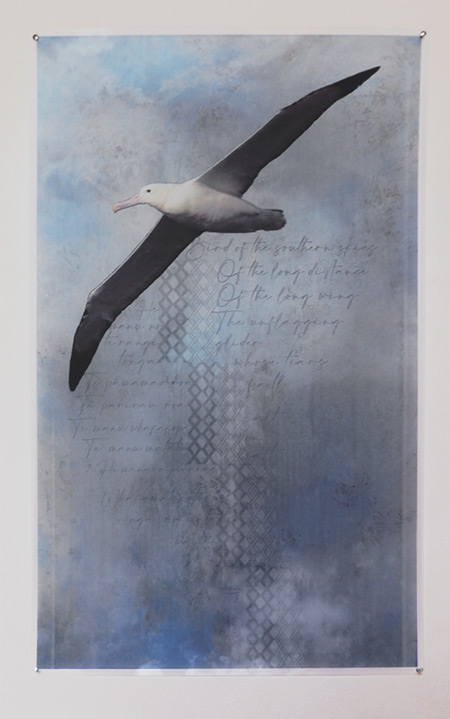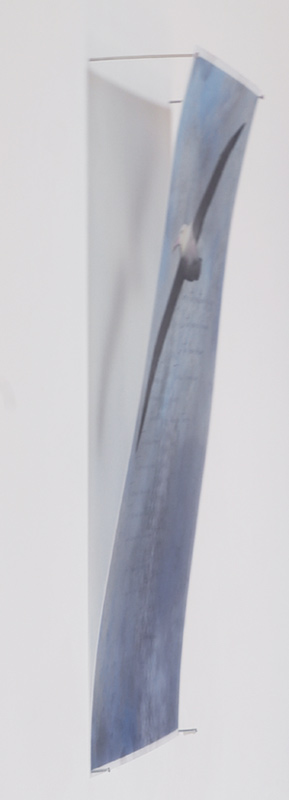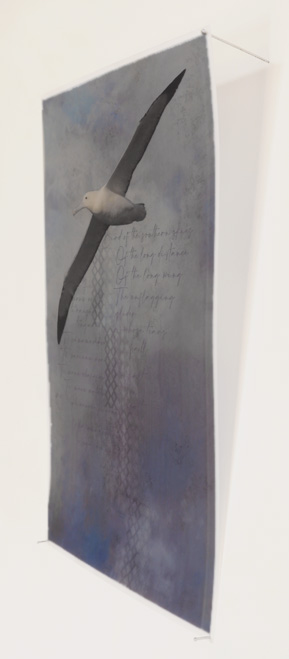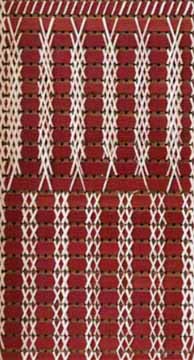![]() Latest work Sonja's c.v. Choose by Medium Prints A tour via thumbnail images
Latest work Sonja's c.v. Choose by Medium Prints A tour via thumbnail images

Laser print on transparency and laminated. Edition of 19.
18 x 29 x 7 cm. The Southern Royal Albatross
was photographed by Ed Dunens in Victoria, Australia in September 2017 (flickr.com)

Side view. The top extends 7 cm out

Side view. The top extends 7 cm out.
Laser print on transparency and laminated.
Edition of 19. 18 x 29 x 7 cm.
The Southern Royal Albatross
was photographed by
Ed Dunens in Victoria, Australia
in September 2017 (See: flickr.com)
Pins are supplied with the print.
NZ$ 600 plus p and p.
|
| ||
He manu nō te rangi tonga
|
Bird of the southern skies
|
|
This was made for the exhibition "Where Will the Seabirds go" curated by Val Cuthbert where each of the 36 artists responded to her call for work that raises awareness of a seabird.
Being land creatures ourselves, we often only encounter these birds when they come to land. The poem is a reflection of life on the wing, day after day (the stuff of endurance) over the oceans. The salt tears symbollize both this resilience and the bird's participation in the sea water ecosystem.
The word Whakamāturuturu meaning made to drip, drop by drop, refers not only to the tears ( ngā roimata) of the bird but also tears of the sea (waitai means sea water) and so the ocean is made of the tears of Rangi (rain as tears from the skyfather, Ranginui), and brings us full circle.
Te Toroa | The Albatross
I have an affinity with the albatross (Toroa in the Māori language) because I have lived on the Otago peninsula, the only place in the world albatross nest on land also inhabited by humans.
I am in awe of the way they glide and the Māori phrase He toroa whakakopa expresses this more explicitly than in the English text. So the poem above translated / corrected by Te Toroa Pōhatu functions as a parallel telling of the endurance of the albatross.
Te manu matatū means watchful bird, and He manawa piharau means, one of great stamina, and comes from a proverb ( whakataukī) "used as a metaphor to describe sustained strength" (Williams, 1927 in Mead and Grove, 2004) cited in Critical Habitats Report, Mahaanui Kurataiao Ltd, 2018. Literally the words mean: lamprey hearted. Lamprey are an ancient eel-like fish.
And "Toroa" was one of the first Māori words I learnt in the 1980s, being the name of my lecturer at Otago University, who also translated the poem that is part of this work.

Detail of a 1967 Roimata Toroa
Tukutuku panel in
the Aotea Meeting House at
Mākirikiri Marae, Dannevirke,
in the centre of the lower North Island.
Source for the photo above:
horizons.govt.nz
The geometric pattern in this image is based on the tukutuku roimata toroa (the tears of the albatross panel pattern) which is common in woven panels in Māori meeting houses across Aotearoa / New Zealand and I knew of this pattern before I learned the name of it.
I have juxtaposed the gliding albatross with a Māori symbol for regret, sorrow or misadventure, as tears often are expressed in many cultures.
This links to carver Pine Taiapa of the East coast (Ngāti Porou) speaking of the ancestor Pourangahua bringing kūmara (sweet potato) to Aotearoa. Pourangahua was accompanied by two albatrosses sent by the tōhunga (expert), Ruakapanga. On his arrival in Aotearoa, he forgot to say prayers of thanks, and prayers for the safe return of the birds to Hawaiki, as he had been instructed. The birds wept, staining their breasts. Elsewhere Pine Taiapa speaks of Pourangahua being carried by these birds, Harongara and Tiungara.
A Ngāti Porou variation of the short and long vertical pattern, refers to one albatross crying with short tears and the other long tears (See an image here).
The way I have arranged the rectangular blocks of this tukutuku pattern references another tukutuku pattern, the poutama or poutama karakia (prayer stairway/steps). This conceptual juxtapostion of tears falling and stairs rising is a reference to a Māori concept of the world as forces in balance in organic shifting relationships.
Albatross tears are very salty because they drink from the sea while in flight and are able excrete the salt from nostril-like holes at the top of their beak. This enables them to live at sea for years (reuters.com). In this sense, they symbollize endurance - step by step, everyday strength.